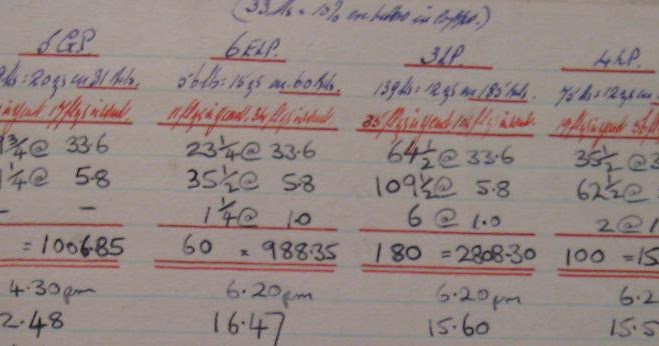I have in fact come down with something, but, lying awake coughing and aching, I’ve had some thoughts. I would not take a “recipe” extrapolated from that log at face value, and here’s why.
In a standard parti gyle (literally “split batch,”) a single wort, of a higher gravity than the strongest beer to be made, is mashed, sparged, boiled, chilled, and divided into multiple fermenters. Before pitching, each fermenter is diluted with water to the desired OG, thus producing versions of the same beer, with same balance, at different gravities.
Fuller’s process represents a complication. Two different worts, of different gravities and different compositions, are taken from mash-in to chill separately, then blended in different proportions into the fermenters before the final dilution. The worts are of different compositions, or there would be no point to the elaboration:
One might expect all of the roast and crystal malts, for instance, to go only into the second mash tun for the weaker wort. Hence on blending, beers could be produced that, though of different gravities, have a similar color, and weaker beers could have a palate fullness and richness naturally present in the stronger beer with less need for crystal, and so on. I would also expect the weaker wort to receive a disproportionate amount of the hops. Thereby weaker beers can drink drier and more refreshing, and stronger beers, being relatively sweeter, will not be deceptively and dangerously drinkable. (This last is counterintuitive to Americans who have come to expect stronger beers to be hoppier, but it has always been the English preference.)
So we may know the weights of various malts and hops that ultimately produced the stated volumes of each beer at each gravity. But we do not know how these ingredients were apportioned. (Maybe why Fullers are so willing to share images of their books: they’re not really giving away the secrets.) It might be possible to reverse engineer each “blend” from available information, but I am not up to it.



